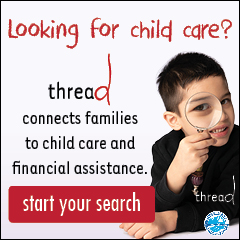

Fighting Congenital Heart Defects:
It Takes a Community
Story by Julia Moore • Photos of Willow by Laura Stennett Photography
When Willow was born in February, she was 18 inches long, 4 pounds and 12 ounces. Although she was small, she was a healthy, incredible baby. “All the nurses were commenting, what a little rock star she was,” recalls her mom, Laura Stennett. After a 37-week pregnancy with appointments three times a week to keep an eye on Willow’s single umbilical artery, Laura was relieved to have a “honeymoon birth.”
Who is at risk for CHD?
Anyone can have a child with a CHD. If heart defects are in your family history, your risk of having a baby with CHD may be increased.
What causes CHD?
In most cases, the cause is unknown. Only a few genes discovered have been linked with heart defects. Other implicated risk factors include maternal smoking or binge drinking, gestational diabetes and folate deficiency.
Source: American Heart Association
A few days later at home, however, Willow wasn’t the same. She would become exhausted from feeding for only a few moments. After spending over a hundred dollars on new, specialty nipples to coax Willow to eat, an answer came at a routine weight-check. “There’s something wrong with her heart,” the doctors told Laura. Week-old Willow was admitted to the children’s hospital and given a nasogastric (NG) tube. Two weeks later, her entire family flew out of state for an open-heart surgery. The reality began to sink in for Laura: “This is getting really serious.”
What Willow’s doctor found was a congenital heart defect (CHD). CHDs are malformations of heart valves, chambers, arteries or veins, which impair the heart’s ability to pump blood to the lungs. Although CHDs are common, found in at least eight out of 1,000 newborns, according to the American Heart Association, they are serious, costly, and, for parents, terrifying. “You kind of feel like you’re going crazy, questioning everything – am I doing what’s right for her?” Laura describes the chaos surrounding Willow’s surgery. With spending hours on the phone and internet consulting with experts and parents, pumping breast milk every three hours and checking on Willow’s NG tube, everyday tasks like grocery shopping became difficult. But the community reached out with a helping hand.
“There were people we’ve never met who just went grocery shopping and dropped in on our front porch or dropped off home-cooked meals.” The care Laura received from the community did more than give her time to spend with her other children and sleep; it inspired her to take action. As a local photographer, Laura is now “paying it forward” with about 30 other photographers statewide through their project Warrior Kids of Alaska. Every week, they gift a photo session to an Alaska child battling a serious medical condition. “We received so much support from the community… It lifted us up when we were in a really dark place.”
Today, parents are fortunate to have an abundance of resources at their fingertips. If your child suffers from a CHD, Laura’s advice to you is to “Take all the help that is offered, and reach out.” While Facebook groups and online communities cannot take the place of professional medical consultations, parents in similar situations can offer advice, and their stories can further inspire you to stay strong.
Willow is now recovered from surgery and working to catch up to other 7-month-old babies in weight and mobility. Laura describes the difference between pre- and post-surgery for her daughter as “night and day.” Although some children may have delays, learning difficulties, or exercise limitations, the American Heart Association assures that most infants with CHDs grow into adults who lead normal lives.










